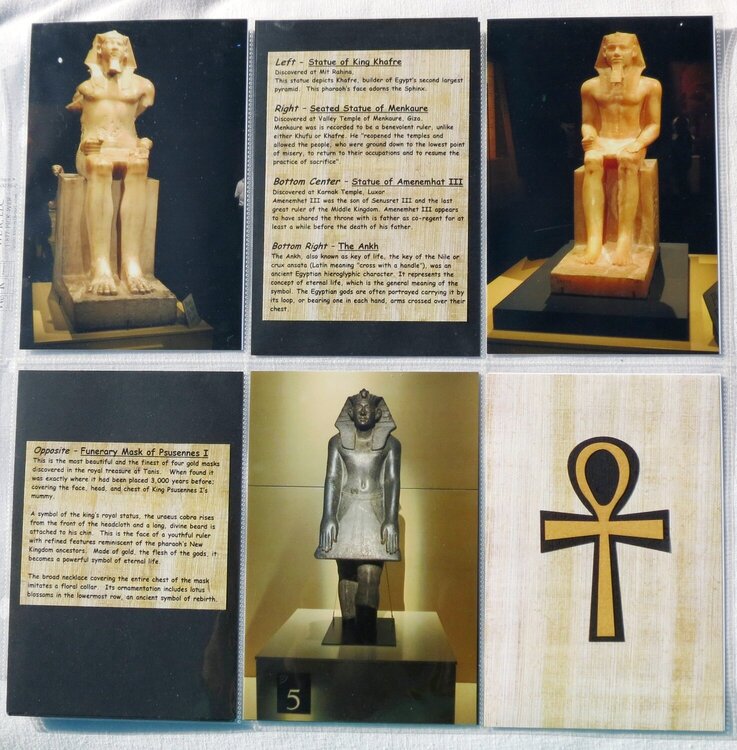Plus, a FREE Gift! | Details Here.


 Give a Cheer
Give a Cheer
Left - Statue of King Khafre
Discovered at Mit Rahina,
This statue depicts Khafre, builder of Egypt's second largest pyramid. This pharaoh's face adorns the Sphinx.
Right – Seated Statue of Menkaure
Discovered at Valley Temple of Menkaure, Giza.
Menkaure was is recorded to be a benevolent ruler, unlike either Khufu or Khafre. He "reopened the temples and allowed the people, who were ground down to the lowest point of misery, to return to their occupations and to resume the practice of sacrifice".
Bottom Center – Statue of Amenemhat III
Discovered at Karnak Temple, Luxor
Amenemhat III was the son of Senusret III and the last great ruler of the Middle Kingdom. Amenemhat III appears to have shared the throne with is father as co-regent for at least a while before the death of his father.
Bottom Right – The Ankh
The Ankh, also known as key of life, the key of the Nile or crux ansata (Latin meaning "cross with a handle"), was an ancient Egyptian hieroglyphic character. It represents the concept of eternal life, which is the general meaning of the symbol. The Egyptian gods are often portrayed carrying it by its loop, or bearing one in each hand, arms crossed over their chest.
Opposite – Funerary Mask of Psusennes I (This is shown on the title page for the exhibit)
This is the most beautiful and the finest of four gold masks discovered in the royal treasure at Tanis. When found it was exactly where it had been placed 3,000 years before; covering the face, head, and chest of King Psusennes I's mummy.
A symbol of the king's royal status, the uraeus cobra rises from the front of the headcloth and a long, divine beard is attached to his chin. This is the face of a youthful ruler with refined features reminiscent of the pharaoh's New Kingdom ancestors. Made of gold, the flesh of the gods, it becomes a powerful symbol of eternal life.
The broad necklace covering the entire chest of the mask imitates a floral collar. Its ornamentation includes lotus blossoms in the lowermost row, an ancient symbol of rebirth.
No products have been added to this project.
Thanks for spreading positivity!
May 07, 2013
March 11, 2013
February 28, 2013
February 23, 2013
February 19, 2013
February 19, 2013
February 18, 2013
February 17, 2013
February 17, 2013
February 17, 2013
February 16, 2013
February 16, 2013
February 14, 2013
February 14, 2013
February 13, 2013
February 13, 2013
February 13, 2013
February 13, 2013
February 13, 2013
February 13, 2013
February 13, 2013
February 13, 2013
February 12, 2013
February 12, 2013
February 12, 2013
February 12, 2013
February 12, 2013